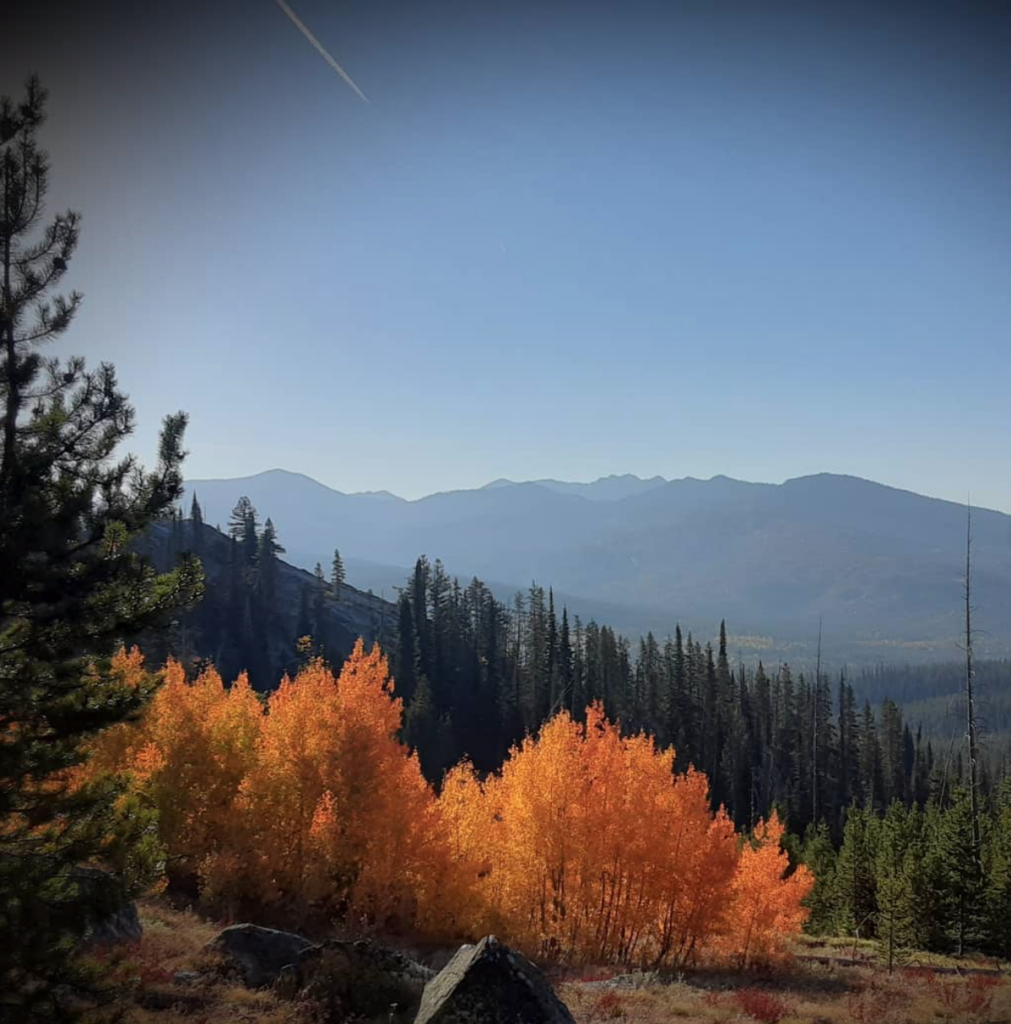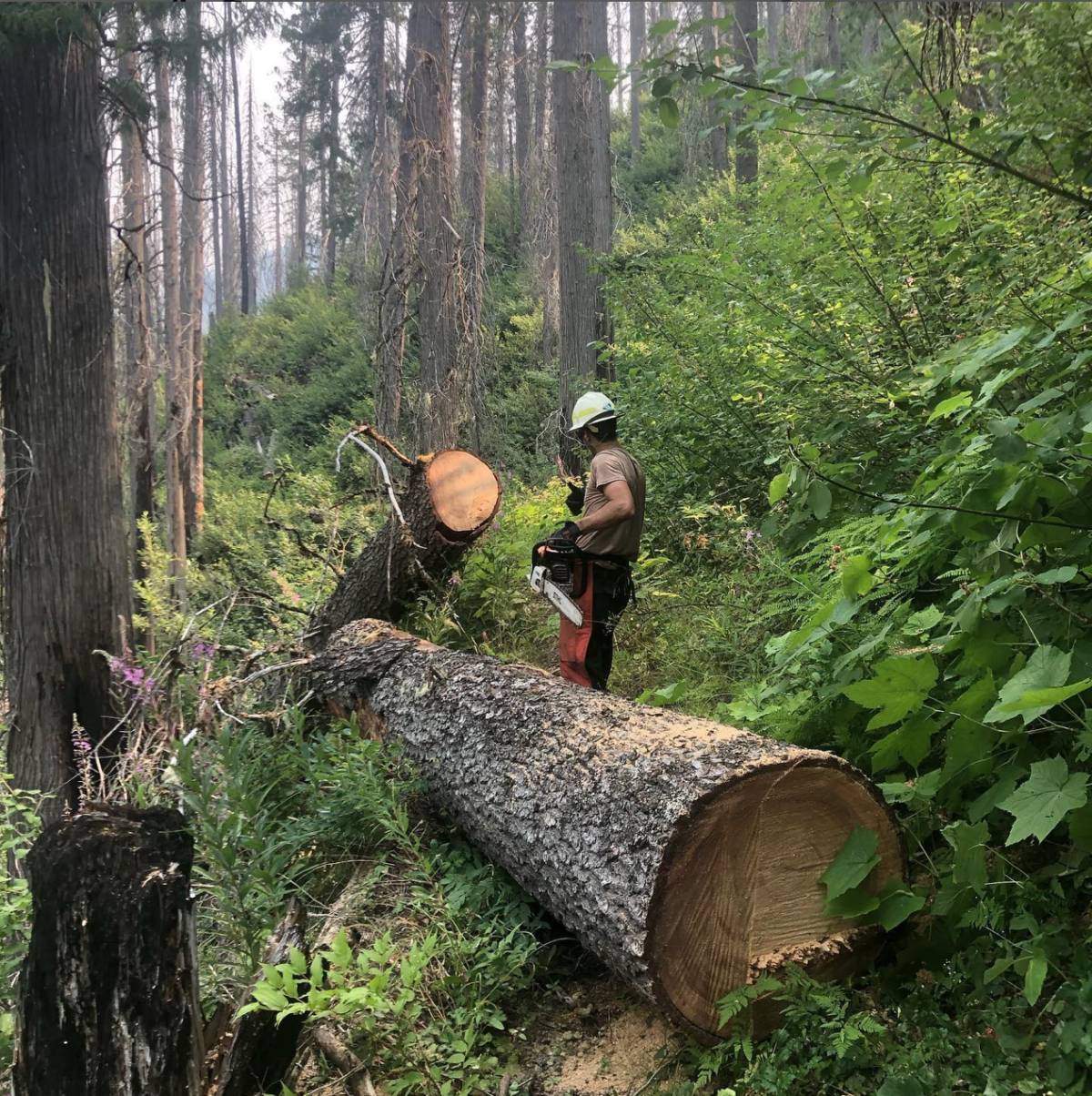This story is part one in a series highlighting Clark Family School of Environment and Sustainability (ENVS) alumni and their work after leaving Western. We hope you enjoy!
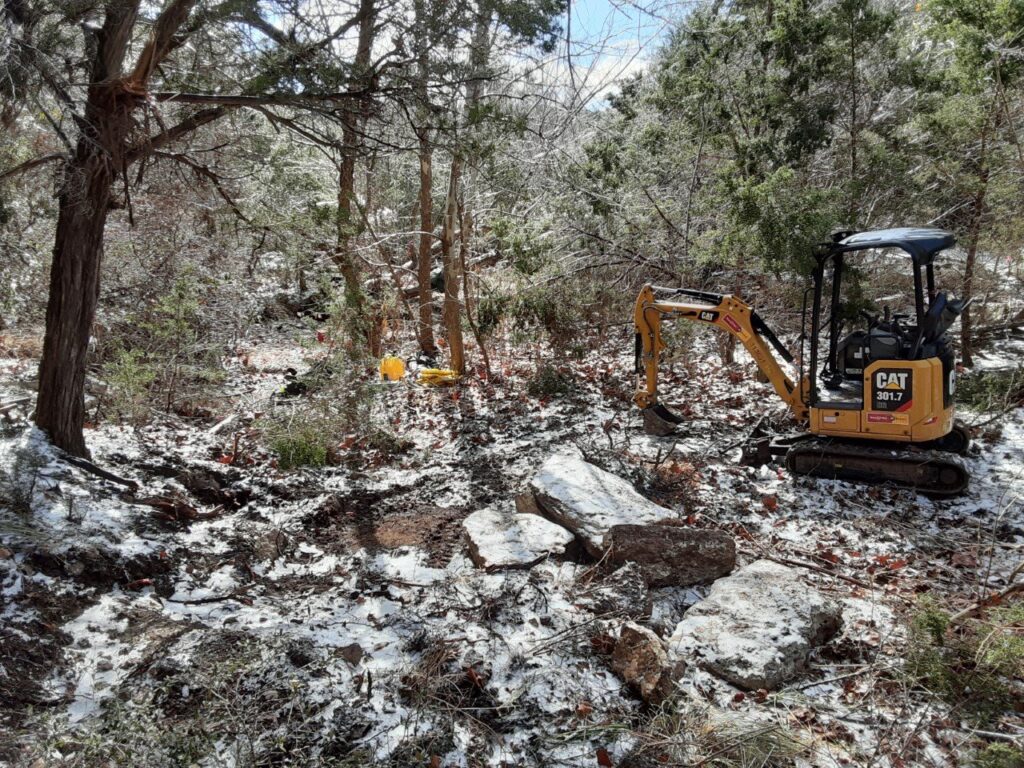
Outdoor enthusiasts count on trails to open pathways for outdoor adventure, often without looking down and considering the design and upkeep implications of the path they depend on. For 2020 Master’s of Environmental Management (MEM) alumnus Alex Ray, trails are serious business. Ray is the founder and manager of Payette Trails, a trail construction and maintenance business that he founded in 2018.
The company’s name is shared with the national forest unit near Ray’s hometown, where he got his start working on trails. Originally born and raised in McCall, Idaho, Ray has crisscrossed the western United States working trails, but his home base is still in McCall. Currently, he is down in the Austin, Texas area working on a complex trail system for a new, 900-acre private subdivision that he originally designed back in March 2020.
The project is Ray’s most challenging to date, and includes building almost four miles of trail, a long bridge, and numerous stream crossings and rock walls. Ray’s role is subcontracted through the company Progressive Trail Design, one of the largest and most respected international trail builders.
“I started doing trails literally the day after I graduated high school,” says Ray, who went to work for the U.S. Forest Service (USFS) at a time just before online applications were widely used. “I was [essentially] hired with a paper application and a shake of the hand,” he says, adding, “I graduated high school on a Sunday, and on Monday I was officially hired, and on Tuesday they put us on a little plane and flew us out into the wilderness.” Ray’s first season consisted of a series of 10-day forays in the Frank Church Wilderness (the largest in the lower 48 states) within the larger Payette National Forest.
At the end of his first summer, Ray went off to college, and in 2005 graduated with his bachelor’s degree from Willamette University in Salem, Oregon, while continuing with trail work over the summers. After graduating, Ray embarked on a seasonal lifestyle, working trails across the western U.S. during the summer season, and taking winters off while logging 100 days a year on a snowboard.
Over that time, Ray accumulated experience with the Forest Service, along with the National Park Service, conservation corps, nonprofits, and other groups dedicated to maintaining trails. Ray continued that seasonal, transient cycle of employment for more than 10 years, working his way into crew leadership positions.
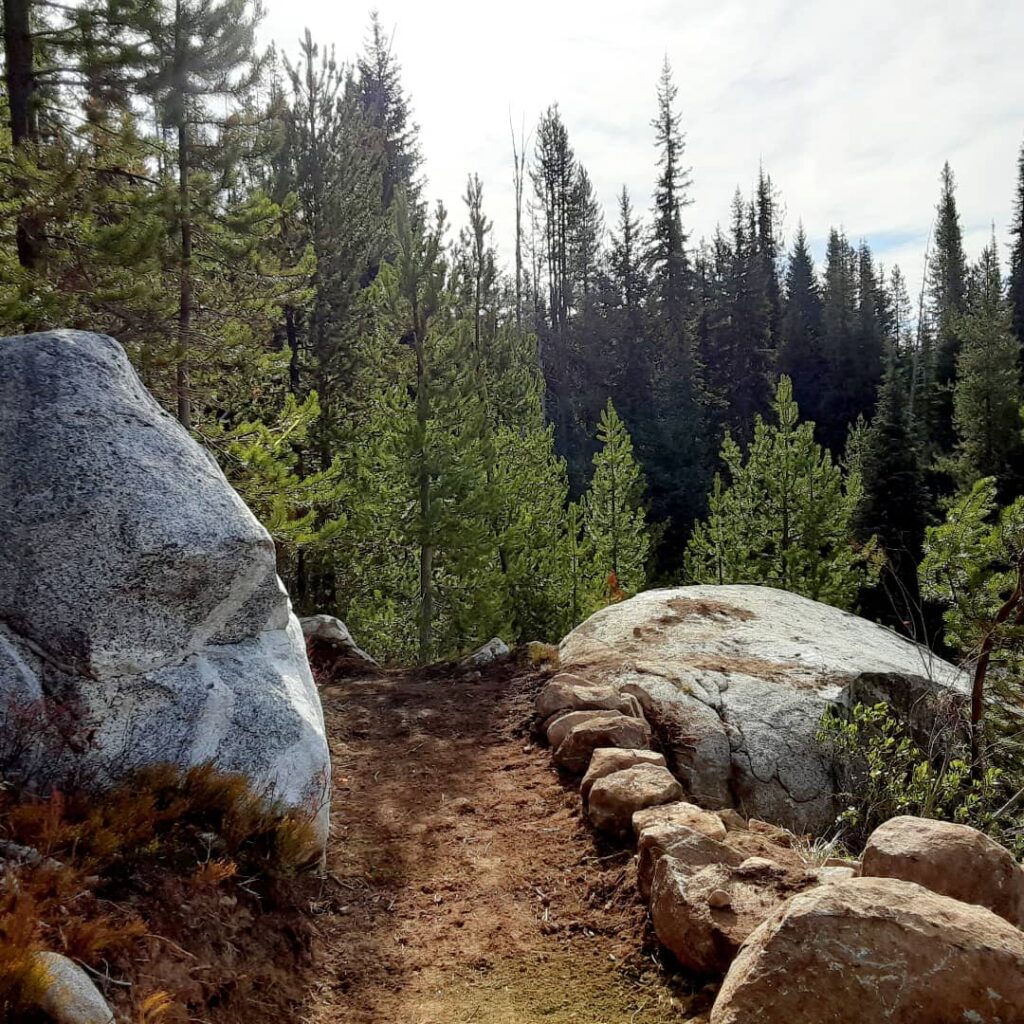
Payette Trails is born
But Ray started feeling an itch when he was working as a crew leader for the Forest Service in the mid-2010s. He wanted to climb the organizational ladder, and decided to return to school, enrolling in a full-time environmental studies master’s program at Green Mountain College in Vermont in 2017. Unfortunately for Ray and his fellow students, GMC fell victim to a broader trend of higher education financial woes, and officially went under during the middle of the 2018-19 academic year before Ray could complete his degree. “It was really sudden, they didn’t give us any notice at all, and it was right before I was about to start my thesis,” he notes.
Ray began to search for alternative educational options, and drafted an email to Sally Thode, a Western professor with years of experience managing Bureau of Land Management lands. Professor Thode convened with Dr. John Hausdoerffer, the Dean of Western’s ENVS program, and together they worked out a solution where Ray would essentially enter into the MEM program in the second year of the two-year program. “It was huge. Grad schools don’t do that…so for them to do that, I was blown away. Really in my whole academic career, [Hausdoerffer and Thode] are two of the [most] awesome people I have ever met,” says Ray.
During his graduate school years, Ray came to the realization that he didn’t want to pursue full-time Forest Service work, preferring instead to spend as much time in the field as possible. “Early in my career, in the 2007-2008 [range], I had a boss who really encouraged me to think about starting a business someday, and I thought about it for about a decade,” says Ray. In 2018, after a rough work experience, Ray incorporated Payette Trails while continuing his graduate studies.
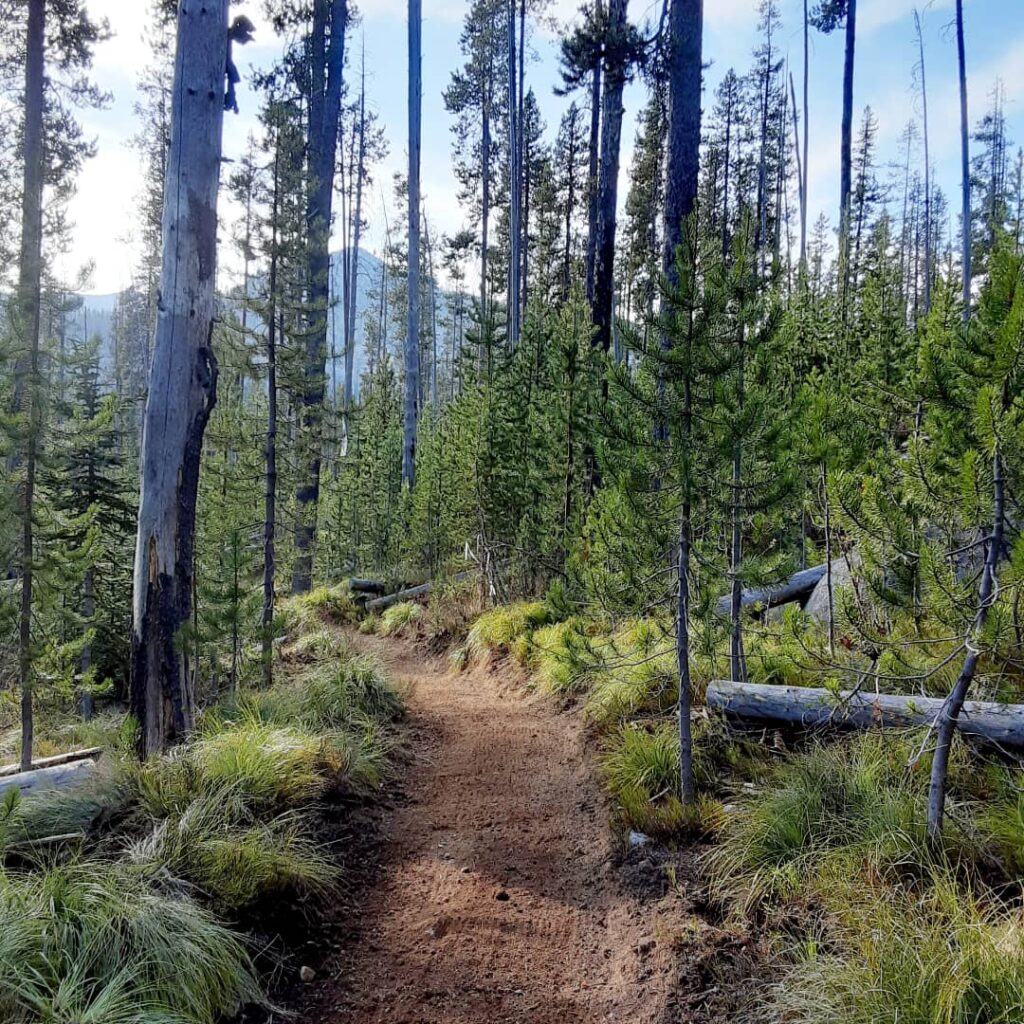
Finding early success
Ray’s 15 years of trail experience helped him land a few big projects early on, validating his decision to go into business for himself. His very first project was a large mountain bike park with more than a mile of trail and 30+ wooden features. “Always, in retrospect, there [are] a million things that I would have done differently if I was doing it again now, but that was a really cool [project] for me to get my foot in the door,” he says.
Ray began traveling around to conduct trail trainings for the Forest Service, including an annual trip to Oregon, as well as for other organizations like nonprofits and volunteer outfits. The topics of these trainings can vary widely: bridge building, new trail construction, and perhaps most importantly for trail sustainability, proper water drainage. “I was fortunate to have some really, really good bosses over the years, some old school trail guys that really knew their stuff, [that] were really good woodworkers and masons,” says Ray.
When Ray was working with the USFS in Oregon, he obtained lots of experience building bridges without the aid of power tools. “One year we did a 66-foot-long bridge and a 90-foot-long bridge. Did everything by hand…flew ’em in, rigged ‘em, and so those experiences really got me in the bridge game,” he adds.
While some projects must be completed by hand due to geographic factors, other projects call for heavy machinery. For his current Texas project, Ray operates a small excavator (three feet wide and weighing in at about 4,000 lbs.) all day, allowing him to crank out as much as 500 or 600 feet of trail per day with a three-person crew behind him polishing off the excavator’s work. Contrast that to a recent project back in the summer of 2021, when Ray and his crew had to hand-dig a trail up on a mountain.
Ray doesn’t mind the confines of an excavator, which can move 1,000 lb. rocks with ease, especially after spending many seasons engaging in laborious, human-powered trail work. “It’s just a whole different style of work, and you can do way cooler stuff with a machine than you can by hand,” he says, adding, “At this point I’m pretty beat up. I’ve got some neck problems, and shoulder problems, and it’s from doing trail work. Backcountry trail work, hauling around a huge pack for years and years. This is definitely a nice reprieve from that,” Ray notes.
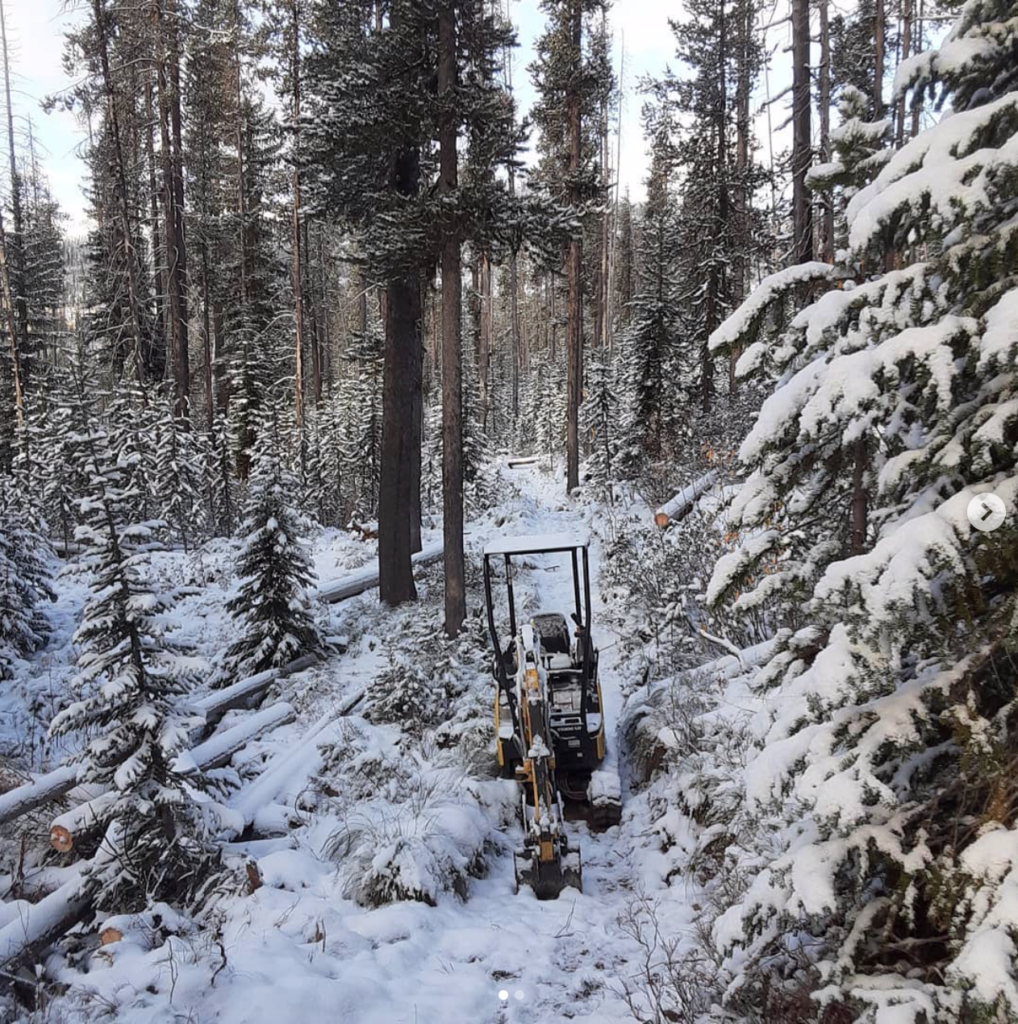
Staying on track
For his larger installation and maintenance projects, Ray will typically hire two or three crew members. “I’ve got a rockstar crew right now,” he says of his team, who were all first choices. Ray typically hires for short-term stints, and, like many in the trail world, will largely take winters off, excluding his current Texas project. Ray anticipates the Texas gig, which began Jan. 10, will require 14 weeks from start to finish, with a hard deadline in April. “Coming down here for a few months in the winter allows me to not work as hard in the summer,” he says.
Ray has designed and built several bike parks himself, complete with wooden features. “[It’s] a lot of stuff you don’t really get paid for. If you’re putting in for a bid, you might have to do days of design work just to get a general fee, [and] if you don’t win the bid, you are never going to get reimbursed for that,” he says of one of the industry’s drawbacks.
He also handles all the administrative work on the back end, including doing his own taxes that span multiple states. “It’s daunting, but at the end of the day, my federal career really prepared me to do that. Because there’s always some kind of paperwork you gotta do,” Rays says. “That’s all running a business is, it’s a billion forms, it’s a billion deadlines to get this form turned in by this time,” he notes, adding, “I enjoy this job enough, I enjoy working for myself enough that it’s just part of the game. If that’s the tradeoff to work for myself, [and] go places that I want to do projects, that’s a good tradeoff.”
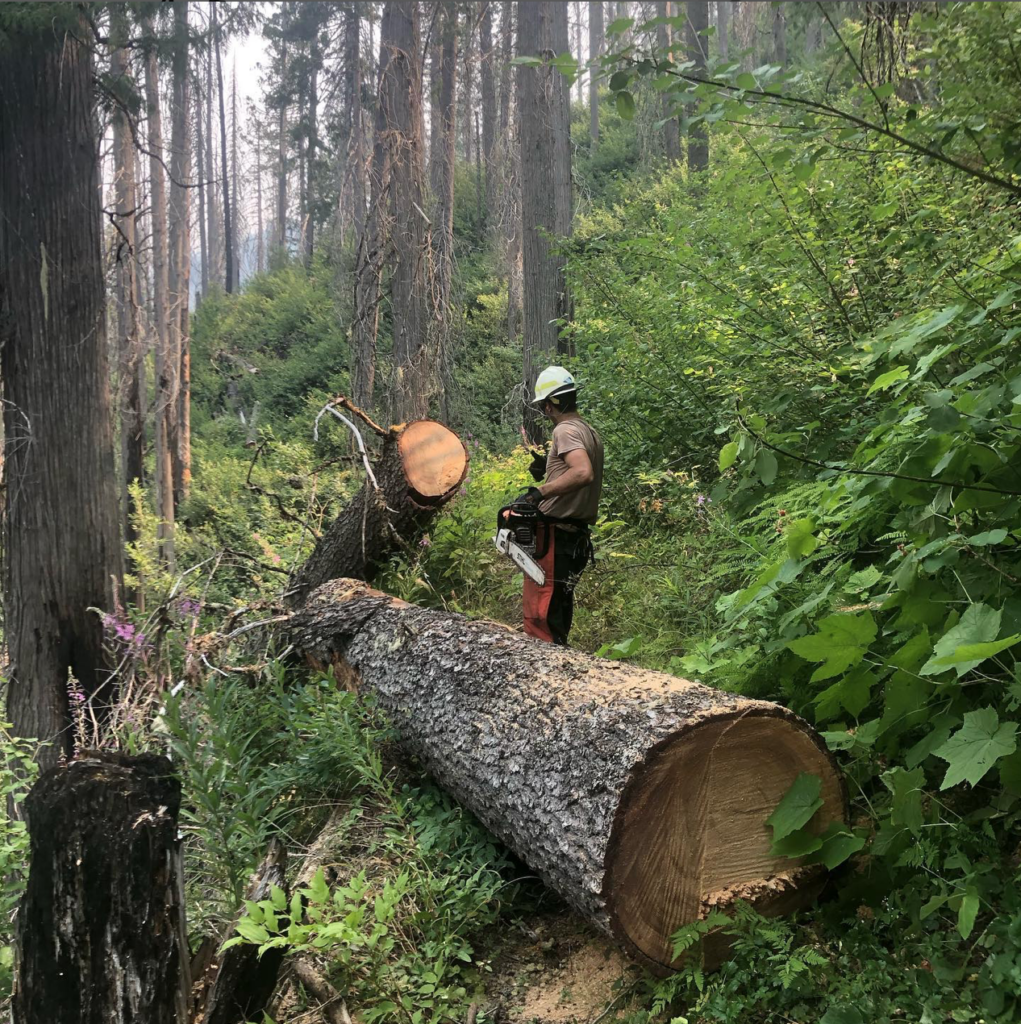
The environmental aspect of trails
On the environmental side, Ray is focused on minimizing the footprint of his work, particularly when it involves a rented two-ton excavator. “An inexperienced operator can make a huge mess really quick, and really mess stuff up.” Payette Trails will use a silt fence on his projects, even when working near dry waterways.
This precaution is in place to ensure that sediment from the work is properly contained and doesn’t impact local water quality. Additional measures like silt fences are a key differentiator from professional, contract trailbuilders and volunteer and government outfits that are often strapped for resources and seeking the path of least resistance.
“It’s going that extra mile, it’s doing those things that you never have the time or the budget to do with the Forest Service or conservation corps,” says Ray. He notes that going above-and-beyond for contract trail work is not only the right thing to do, but also just the industry standard. “Things have to be perfect,” he adds. Particularly for private, upscale developments, Ray stresses the importance of removing any evidence of process to create a perfect finished product that appears natural on the landscape.
Another factor to consider are the “spoils”, the extra dirt derived from building a trail. Ray will quickly spread out and cover up this excess soil with organic matter to mitigate erosion. For federal projects, he notes that most trail projects have already undergone the NEPA process to identify environmental concerns. “In a project like this, it’s just working with the landowner, it’s working with the people that know the area [and that] know the land, know the spots to avoid…just figuring out: where is gonna be the most durable surface?”
Another key consideration is trail sustainability over time. “Any time you build a structure on a trail, you have to maintain that structure,” says Ray. A key part of Ray’s work, then, is trying to eliminate the need for structures like water bars, which aim to divert water off trails. Instead, he will try to build-in rolling grade dips on hills to allow water to naturally flow off. “With the machine, I can keep the trail at a very slight outslope the whole time,” he adds. Ray is shooting to build trails that will last 50+ years, so long as people keep using them.
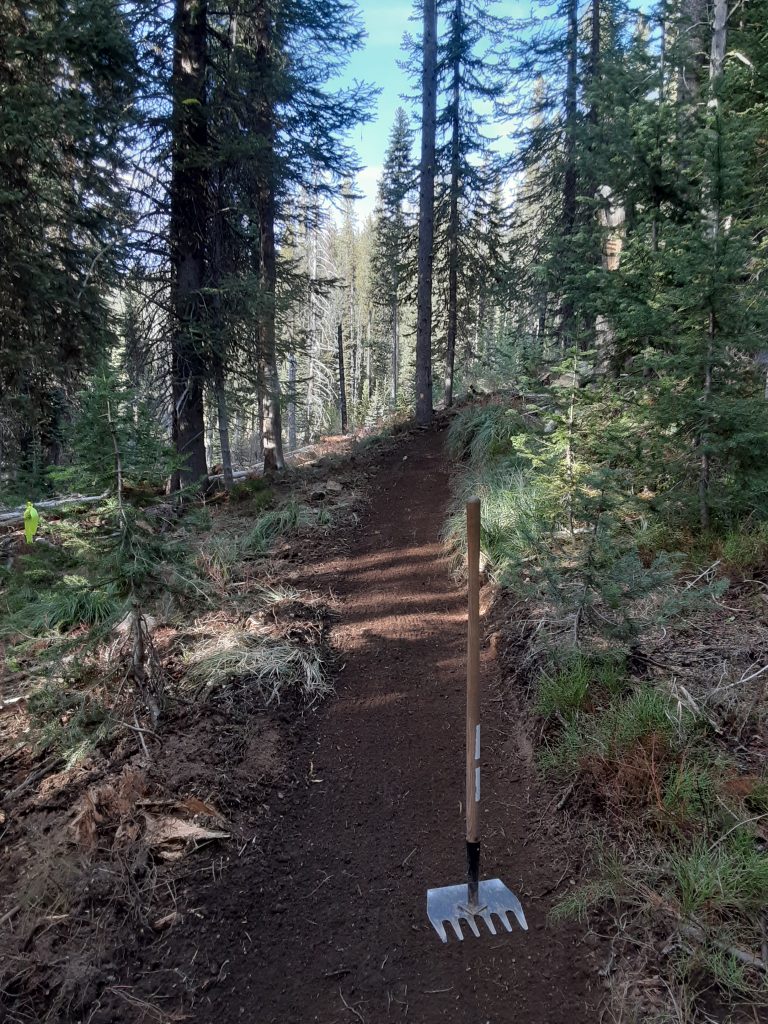
The art of bidding
Currently, the market for trail work is favorable to trail builders. Ray notes that with recent legislation, including the Great American Outdoors Act passed in 2020, there is a good deal of money available, and he hasn’t had to formally bid on work for about 18 months. Covid-19, while initially hampering business, has centered society’s focus on outdoor recreation, opening pathways for trail development.
When Ray does have to bid on a specific project, the process can be intensive. Laying out the work required is a numbers-heavy game involving lots of spreadsheets and data crunching. “Am I going to have to buy rock? Am I going to be able to use rock that’s on site? Just all those little things…it’s a million phone calls,” says Ray, who heavily advises against bidding on a project you haven’t laid eyes on.
Besides calculating labor and material costs, Ray also has to think about project housing for work outside of McCall’s radius and organizing the required services for his crew. Ray sees his years of experience working on trails as a leg-up on competition in terms of estimating the project’s timescale.
Bidding for contracts can be somewhat of an underrated art form. Often, the natural inclination in a competitive bidding process is to try to undercut other bidders with a low offer that improves the chances of obtaining the project. Ray learned his lesson on his first larger project, when he essentially broke even after some unanticipated cost overruns, despite building some cushion into his bid.
Nowadays, Ray adds a set percentage to his bid after calculating his total estimated costs. “Since [that first project], my goal has been to bid high on everything. To bid high, and then negotiate, and that’s worked out pretty well for me,” he adds.
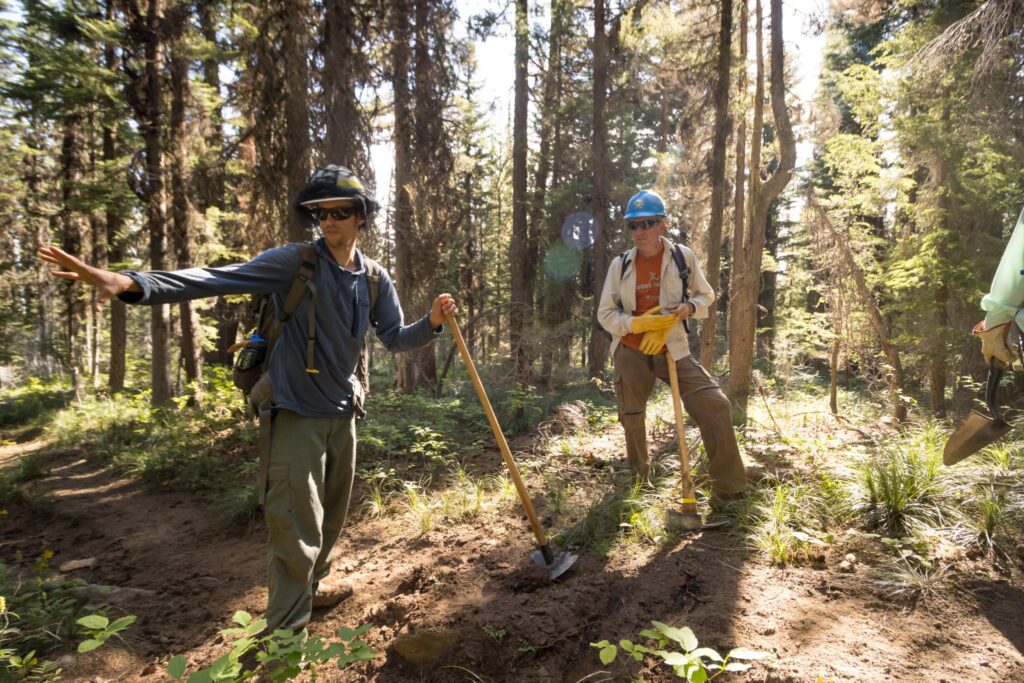
Recently, Ray worked with the local mountain biking club in McCall, which he notes is ideal because the club’s decision-makers often have a thorough understanding of all that is involved with building a trail, and budget accordingly. “Most people when you give them a per-foot price, they’re like ‘woah, it costs that much to build a trail?’” The total cost of installing a trail can vary substantially depending on a number of factors: location, local soils and geology, desired trail width, bridges and stream crossings, and rockwork, amongst other considerations.
Ray says that a quality mountain bike trail in a resort will start at around $10 per foot, working out to more than $50,000 per mile. “No one ever thinks about what it takes to build a trail, especially like a nice, three-foot wide path through a community, but it’s [an] incredible amount of work,” he adds. “So few people think: ‘wow, somebody actually had to come out here and build this trail.’”
Entering the consulting world
While much of Ray’s professional life has revolved around trails, he says that the intersection of outdoor recreation and water resources has always interested him. During his MEM year where he was balancing his trails business and his studies while attending Western remotely from Idaho, Ray did a research project centered on the impacts of wake boats on a nearby lake. He analyzed a number of different factors, compiling a proposal complete with recommendations on behalf of a local nonprofit for his master’s project.
“It’s kind of an emerging field, and my research got out there. Some people found about my research, some other wake boat groups from around the country, and I’ve been doing quite a bit of pro bono consulting to community groups all over the country,” he says. Soon, Ray will work as a consultant on a recommendation for a Homeowners Association in California. “They’re trying to put a weight limit on boats on their lake, so they want an opinion, and they want some research backing a weight limit on wake boats,” he offers.
Ray credits the MEM program with providing a background in environmental policy, history and law that has benefited him in his business career, specifically with governmental relations. And Ray’s ties to Western continue, as his girlfriend is currently enrolled in the Master’s in Creative Writing program after more than 20 years working on trails, predominantly with the National Park Service.
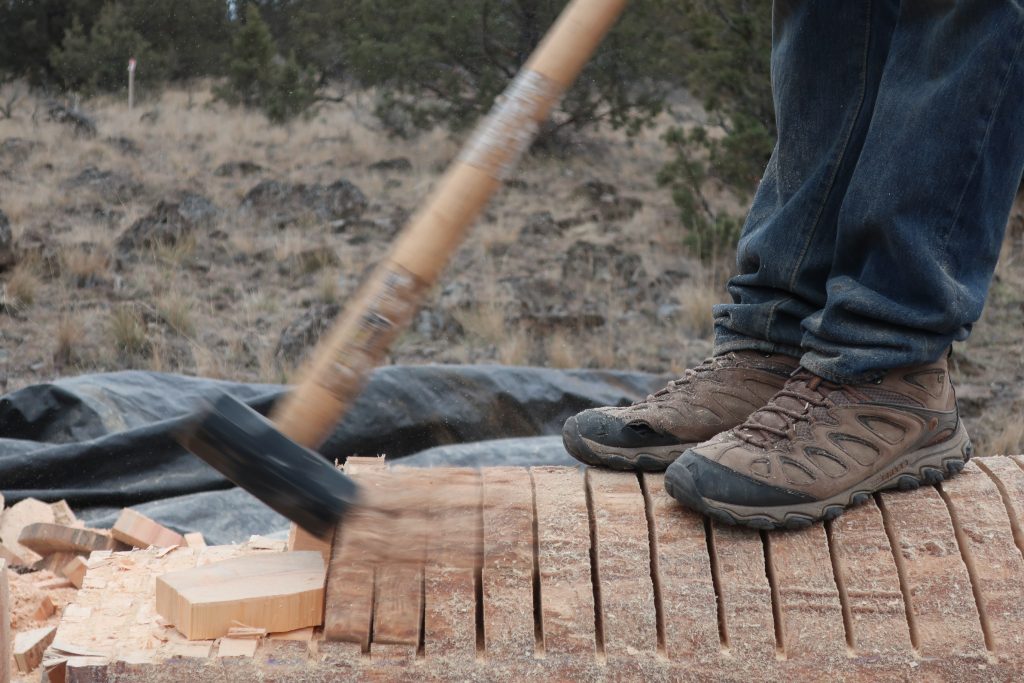
Looking ahead
Regarding transitioning out of trail work, Ray admits that the prospect of pivoting out of a career in trail work can be daunting. “You get done with trails and you have this amazing experience but there’s no way to relate that on a resume. People are like: ‘oh, you went and dug in the dirt?’ [And] you’re like: ‘no, I’ve been project [planning] and people managing…people don’t get it,’” says Ray.
Eyeing the future, he will look to build his contracting and construction business over the next half decade or so, and then transition into a heavier consulting and training role, where he can continue working with agencies and volunteer groups to help ensure their trail projects are a success.
Reflecting back on a life of trails, Ray remarks, “When I was younger, I couldn’t believe the government would fly me into the wilderness and pay me to hike around and cut trees with a crosscut. After that thrill wore off, I realized I loved it because I wanted other people to be able to experience the woods too. I liked to say not everyone needs to spend a day in the city, but everyone could use a day in the woods,” says Ray.
That sentiment wore off, he says, after spending some time in the Seattle area, “I encountered way too many people that probably shouldn’t have been in the woods!” Ray exclaims. Nevertheless, Ray’s genuine love for using and building trails prevails.
If you’re interested in getting into the trail business, Payette Trails is almost always looking for trail workers. To apply, visit Payette’s website or reach out via Instagram.
“If people are coming from Western, that’s cool, because one thing I want is people to have a strong background in environmental and natural resources. I know I’m getting that when I get someone from Western,” Ray says.
